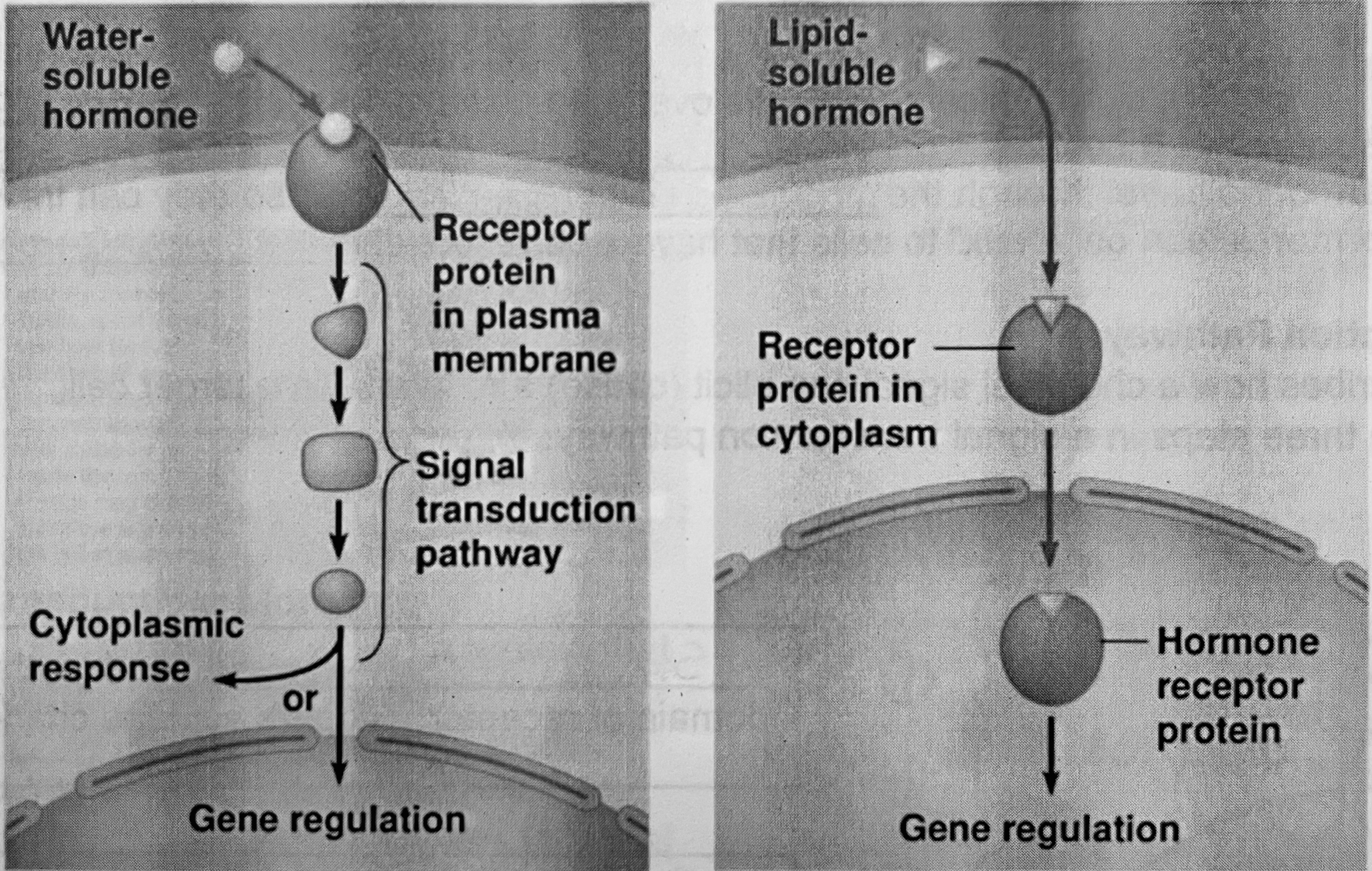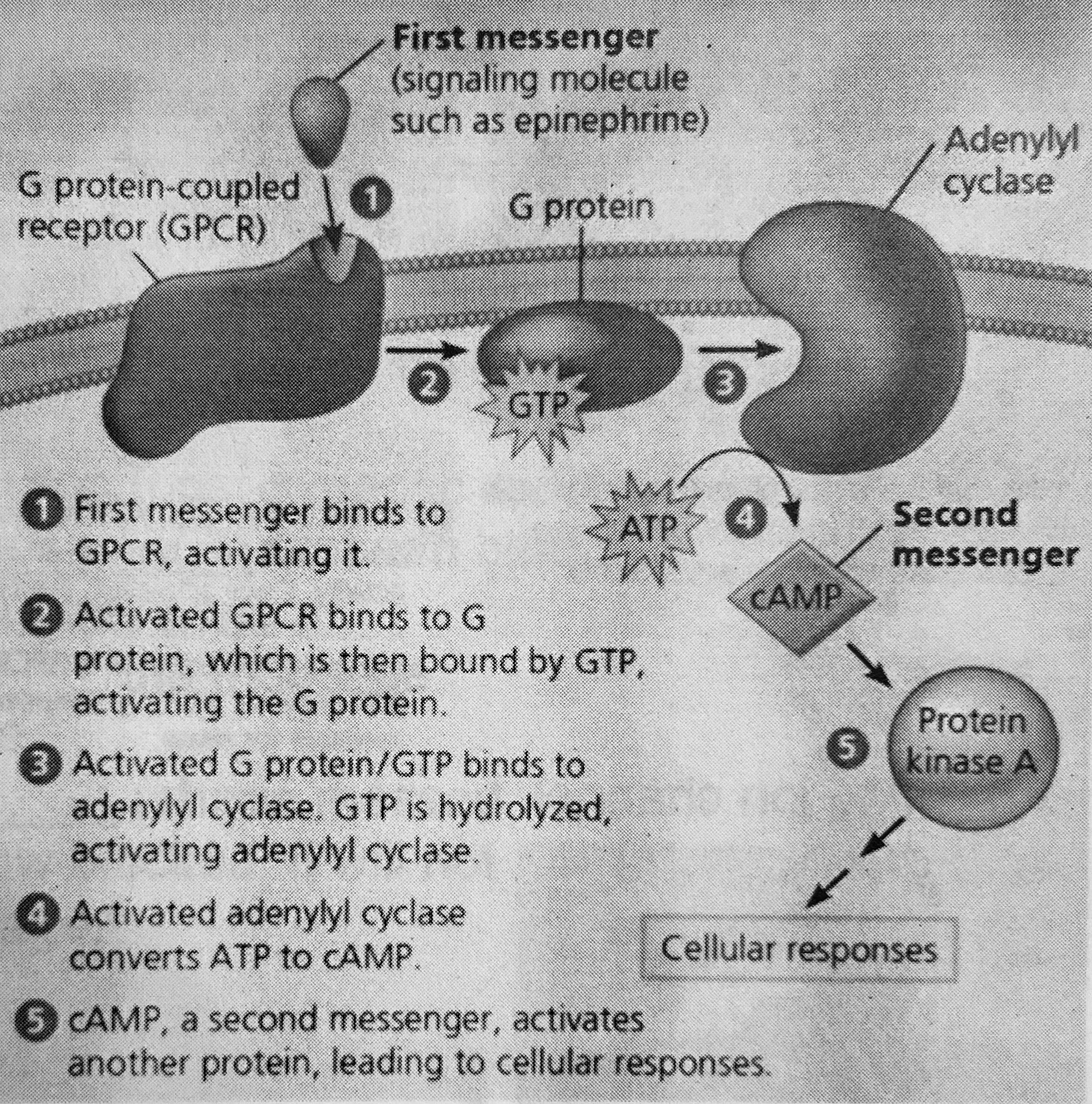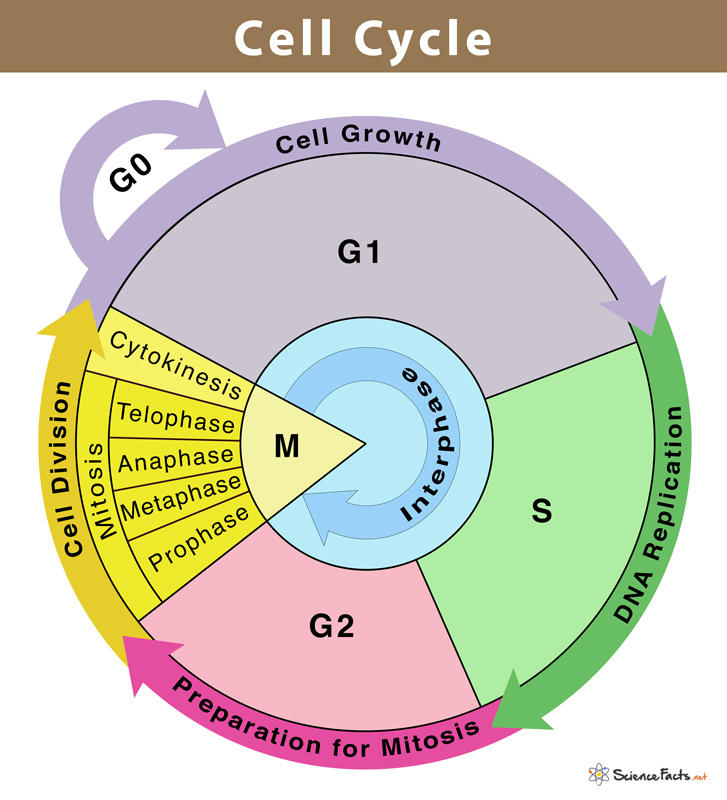AP Bio-- Cell Communication/Division
Communication
-2 Methods—
Cell-to-cell contact
Plasmodesmata— channels that connect the cytoplasm of plant cells through their cell walls (used in immune system)
Gap Junction— channels that connect the cytoplasm of animal cells
temporary contact is used in the immune system —> immune cells activate when a cell has an antigen that binds to the receptor
Chemicals
Ligand— chemical messenger, can be polar (water-soluble) or nonpolar (lipid-soluble)

target cells have the receptors for ligands
e.g. neurotransmitters cross synapses between neurons, hormones are used over long distances through the bloodstream
-Signal Transduction Pathway
Signal Reception
ligand binds to receptor, triggers shape change
Signal Transduction
steps that convert the signal into a form that can create a response
usually activating proteins with phosphate
can amplify signal
Response
any cell activity (e.g. gene activation, apoptosis, cell growth)
G protein-coupled receptor (GPCR)— a ligand binds to receptor, activated receptor binds + activates G protein, G protein carries GTP to an enzyme, enzyme is activated, triggers next step (all temporary)
Ligand-gated ion channel— ligand binds to channel to open it and allow ions through (temporary)
Kinase— protein that activates other proteins by adding a phosphate to them (can cause phosphorylation cascades)
Phosphatase— protein that deactivates other proteins by dephosphorylating them
Second messenger— small, non-protein molecules or ions that help carry signal through cytoplasm (e.g. cAMP)

signaling pathways mostly either regulate protein synthesis by activating/deactivating genes in the nucleus or regulate protein activity of proteins functioning outside the nucleus (e.g. opening/closing ion channels)
-Bacterial Communication
Quorum Sensing— regulates gene expression in response to bacteria population density
bacteria produce autoinducers that are released into the environment
certain levels of autoinducers alter gene expression
e.g. bioluminescence
Cell Division
somatic cell = body cell, diploid
divide when the body grows or heals


Regulation
Maturation Promotion Factor— example of signal telling cell when to divide
all cells have cyclin-dependent kinase, concentration doesn’t fluctuate, but they’re usually inactive
cyclin activates CDK, cyclin concentrations vary
cyclin + CDK = MPF —> high MPF causes cell division
cyclin is degraded to stop division
Checkpoints
if there are issues, cell undergoes apoptosis (controlled cell death)
Cancer— uncontrolled cell division
Tumor-suppressor gene— codes for protein that stops cell division when there is major DNA damage
Proto-oncogene— codes for protein that stimulates cell division
should NOT always be turned on (becomes an oncogene)